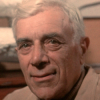Georges Braque

Georges Braque
Georges Braquewas a major 20th-century French painter, collagist, draughtsman, printmaker and sculptor. His most important contributions to the history of art were in his alliance with Fauvism from 1906, and the role he played in the development of Cubism. Braque’s work between 1908 and 1912 is closely associated with that of his colleague Pablo Picasso. Their respective Cubist works were indistinguishable for many years, yet the quiet nature of Braque was partially eclipsed by the fame and notoriety of Picasso...
NationalityFrench
ProfessionPainter
Date of Birth13 May 1882
CityArgenteuil, France
CountryFrance
Whatever is valuable in painting is precisely what one is incapable of talking about.
A painting without something disturbing in it – what's that?.
In a painting, what counts is the unexpected.
Writing is not describing, painting is not depicting. Verisimilitude is merely an illusion.
Scientific perspective forces the objects in a picture to disappear away from the beholder instead of bringing them within his reach as painting should.
Poetry is to a painting what life is to man.
Take the birds which you'll have noticed in so many of my recent paintings. I never thought them up, they just materialized of their own accord; they were born on the canvas... it is absurd to read any sort of symbolic significance into them.
Poetry' is what distinguishes the cubist paintings Picasso and I arrived at intuitively from the lifeless sort of painting those who followed us tried, with such unfortunate results, to arrive at theoretically.
I do not think my painting has ever been revolutionary. It was not directed against any kind of painting. I have never wanted to prove that I was right and someone else wrong...
It is not sufficient that what one paints should be made visible. It must be made tangible.
The space between the dish and the pitcher, that I paint also.
The painting is finished when the idea has disappeared.
I am much more interested in achieving unison with nature than in copying it.
I couldn't portray a women in all her natural loveliness.. I haven't the skill. No one has. I must, therefore, create a new sort of beauty, the beauty that appears to me in terms of volume of line, of mass, of weight, and through that beauty interpret my subjective impression. Nature is mere a pretext for decorative composition, plus sentiment. It suggests emotion, and I translate that emotion into art. I want to express the absolute, not merely the factitious woman.